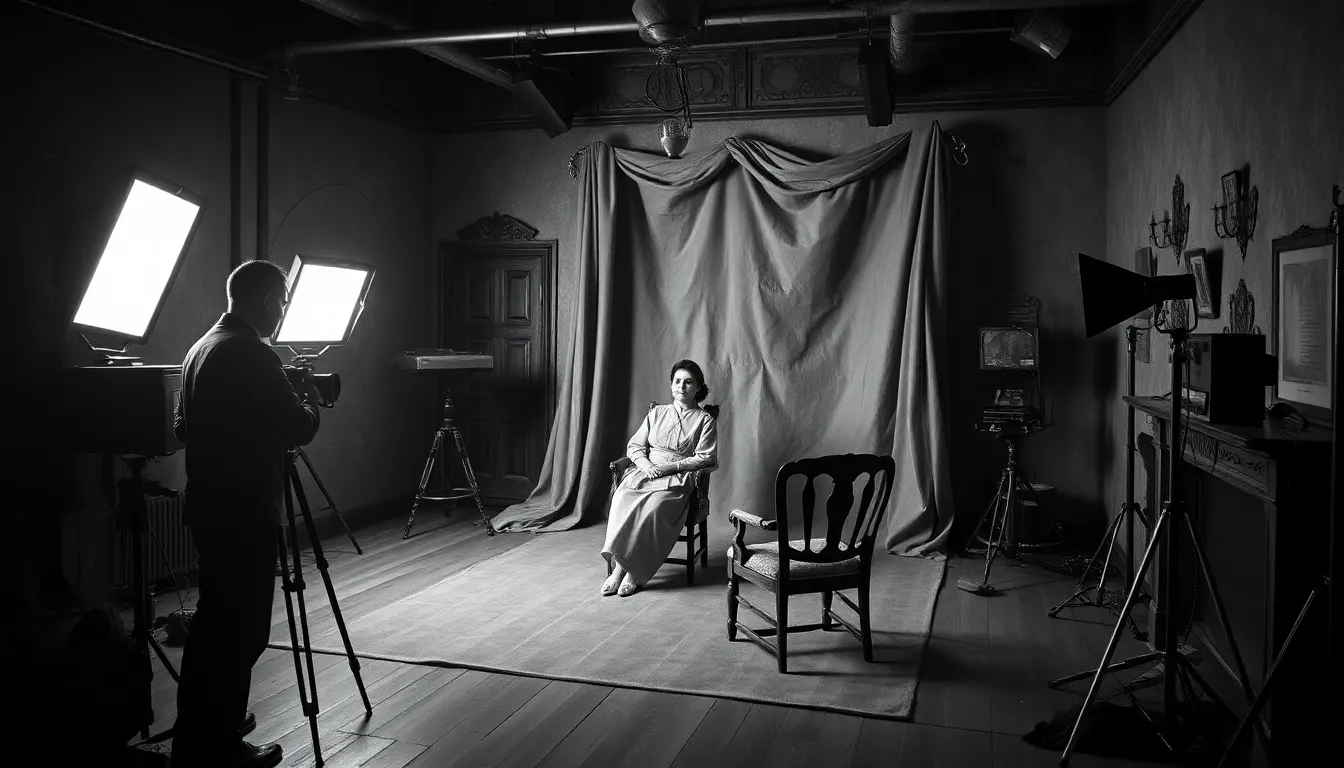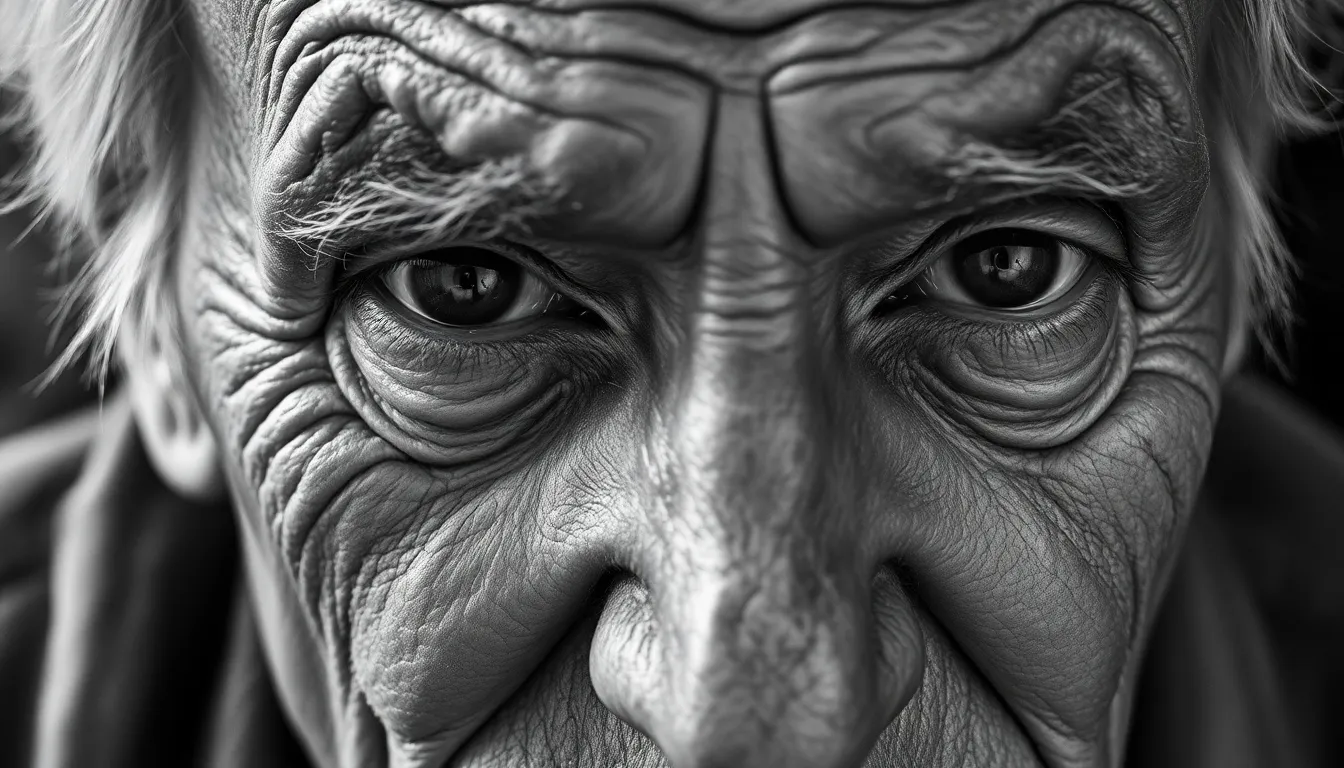In a world bursting with color, black and white photography stands out like a tuxedo at a beach party. It strips away distractions, revealing the raw emotions and striking contrasts that often get lost in a rainbow of hues. This timeless art form invites viewers to see the world differently, capturing the essence of a moment with a clarity that can be downright poetic.
Imagine a scene where shadows dance and light plays tricks, creating a visual symphony that speaks volumes without uttering a word. Black and white photography isn’t just about the absence of color; it’s about embracing the beauty of simplicity, telling stories that resonate on a deeper level. So grab that camera, channel your inner Ansel Adams, and explore the monochrome magic waiting to be discovered.
Table of Contents
ToggleWhat Is Black and White Photography?
Black and white photography captures images without the distraction of color. This technique emphasizes light, texture, and form, allowing for a more profound interpretation of subjects. Artists often use monochrome to draw attention to emotions and themes within the frame. Striking contrasts and shadows create a dramatic effect that can enhance storytelling.
Using varying shades of gray, photographers can convey mood and atmosphere effectively. The absence of color invites viewers to focus on the composition and the subject matter. Classic styles and contemporary approaches coexist within black and white photography, each offering unique perspectives. Many iconic photographers such as Ansel Adams and Dorothea Lange shaped the genre, showcasing its power to evoke feelings and provoke thought.
Black and white photography suits various genres, including portrait, landscape, and street photography. Each discipline benefits from the clarity and simplicity monochrome offers. Experimentation with light and shadow plays a crucial role in achieving striking results. Photographers often explore different tones to create depth and texture, making each print distinctive.
Visual storytelling becomes accessible through the use of black and white. Historical and emotional narratives unfold, engaging viewers in a different way. Some photographers prefer digital techniques, while others stick to traditional film, both methods presenting opportunities to create compelling images. Ultimately, black and white photography remains a timeless art form that transcends trends and speaks universally through its simplicity and beauty.
The History of Black and White Photography

The evolution of black and white photography showcases its rich heritage. This art form traces back to the early 19th century.
Early Beginnings
Photographers first experimented with light-sensitive materials, creating images without color. The daguerreotype, invented in 1839 by Louis Daguerre, marked a pivotal moment in this journey. This process produced detailed images on silver-plated copper. Early works often captured portraits and landscapes, emphasizing depth and texture. Within just a few years, the collodion wet plate process emerged, allowing for reproducible negatives. The capability to produce multiple prints from a single image transformed the medium, expanding accessibility and popularity.
Key Influences and Movements
Several movements significantly shaped black and white photography. The Pictorialism movement in the late 19th century aimed to elevate photography as an art form. Artists like Alfred Stieglitz promoted emotional expression through soft-focus and manipulated prints. The advent of Modernism in the early 20th century shifted focus to clarity and direct representation. Photographers such as Ansel Adams pioneered the use of the Zone System, controlling exposure and developing techniques. These advancements not only improved technical quality but also allowed for dramatic tonal contrasts that captured the viewer’s attention.
Techniques in Black and White Photography
Black and white photography requires specific techniques to enhance its artistic impact. Mastering these methods can profoundly elevate the emotional resonance of images.
Lighting and Contrast
Effective lighting plays a crucial role in black and white photography. It determines how shadows and highlights interact within the frame. Soft light creates subtle textures, while harsh light enhances stark contrasts. Photographers often utilize natural light during golden hour for dramatic effects. Artificial lighting can also offer unique control over the scene’s mood. High contrast settings accentuate shapes and forms, bringing a sense of depth. Enthusiasts should experiment with various lighting conditions to discover their preferred style. Shadow play adds additional layers to the imagery, emphasizing the beauty of monochrome.
Composition Strategies
Composition significantly influences the effectiveness of black and white photography. Strong framing guides the viewer’s eye and provides clarity to a subject. The rule of thirds remains a popular guideline for achieving balanced images. Simplifying the background helps maintain focus on the subject. Leading lines can draw attention and create depth within the frame. Patterns and textures also stand out without color, making them vital for effective composition. Utilizing negative space enhances the visual impact and contributes to storytelling. Photographers benefit from practicing these strategies to refine their skills and elevate their work.
The Emotional Impact of Black and White Photography
Emotions resonate deeply in black and white photography. Stripped of color, images focus on light, shadows, and textures, provoking a powerful response from viewers. Viewers often connect more profoundly with subjects when monochrome images emphasize raw feelings and dramatic contrasts.
The absence of color directs attention to composition and form, enhancing atmospheric nuances. Shades of gray convey mood distinctly, allowing interpretations that differ from vibrant color photography. An evocative portrait, for example, can reveal the subject’s vulnerability through soft highlights and deep shadows, promoting empathy.
Strong contrasts often heighten emotional tension. When light meets darkness, remarkable stories unfold, inviting analysis and reflection. Each contrasting detail becomes significant, making moments more memorable. Instead of colorful distractions, the focus shifts to the essence of the scene.
Iconic photographers like Ansel Adams utilized these techniques to express deep narratives. Adams’ landscapes showcase emotional resonance through intricate tonal ranges, allowing viewers to experience nature’s majesty without color. Likewise, Dorothea Lange’s portraits capture human struggle compellingly, emphasizing the emotional weight behind the image.
Photographs can communicate complex feelings effectively, serving as a visual language without words. Crafting images with intention involves creating emotional journeys that challenge perceptions. By utilizing light and shadow strategically, photographers evoke a wide range of emotions, from nostalgia to joy or sorrow.
Black and white photography remains a timeless medium for conveying emotional depth. The focus on composition, texture, and contrast fosters a unique connection between the photographer and the audience, ensuring each image tells a compelling story.
Modern Applications and Trends
Modern black and white photography embraces various applications across diverse genres. Photographers today leverage the simplicity of monochrome to create strong visual narratives. Artists focus on minimalism and emotional themes in their compositions, often capturing the raw essence of their subjects.
Social media platforms highlight the rising popularity of black and white imagery. Users frequently share striking monochrome photos on Instagram and Pinterest, emphasizing aesthetics and storytelling. This trend reflects a collective appreciation for art that transcends color.
In advertising and fashion, black and white photography maintains relevance. Many brands utilize it to convey elegance, sophistication, and timelessness in their campaigns. Designers often favor this style for capturing the intricate details of fabrics and textures, providing a classic yet modern touch.
Digital tools and post-processing software enhance the capabilities of contemporary photographers. Photographers utilize programs like Adobe Lightroom and Photoshop to manipulate contrasts and textures with precision. These techniques allow for creative experimentation, yielding distinctive and impactful visuals.
Various photography communities and workshops emphasize the importance of black and white photography education. Many local and online groups facilitate discussions and critiques, helping emerging photographers refine their craft. Networking opportunities arise at exhibitions featuring black and white photographers, fostering collaboration and fresh ideas.
Trends indicate a resurgence in analog film photography, aligning with the nostalgia for tactile experiences. Many artists return to traditional methods, exploring the unique characteristics of film grain and contrast. This revival emphasizes the enduring allure of monochrome, reinforcing black and white photography’s position as a vital artistic form.
Black and white photography transcends mere aesthetics. It invites viewers to engage with the emotional core of each image. By stripping away color distractions, it emphasizes light, shadow, and texture, allowing for a more profound interpretation of subjects.
This timeless art form continues to resonate in today’s visual culture, appealing to both seasoned photographers and newcomers alike. As they explore its rich history and techniques, photographers can capture moments that tell powerful stories. Embracing the simplicity and depth of monochrome photography can lead to striking results that leave a lasting impact.



